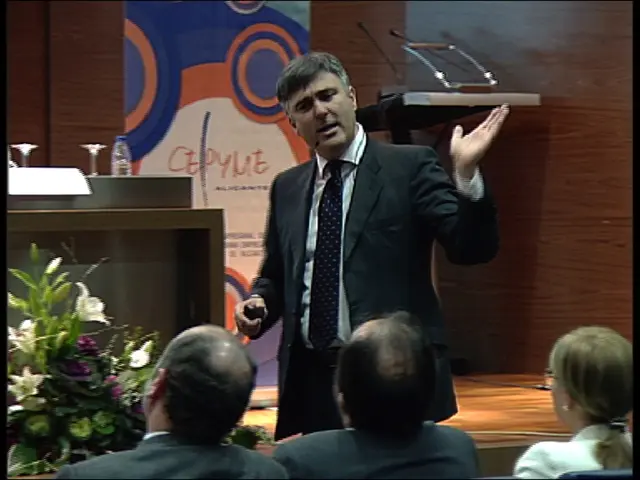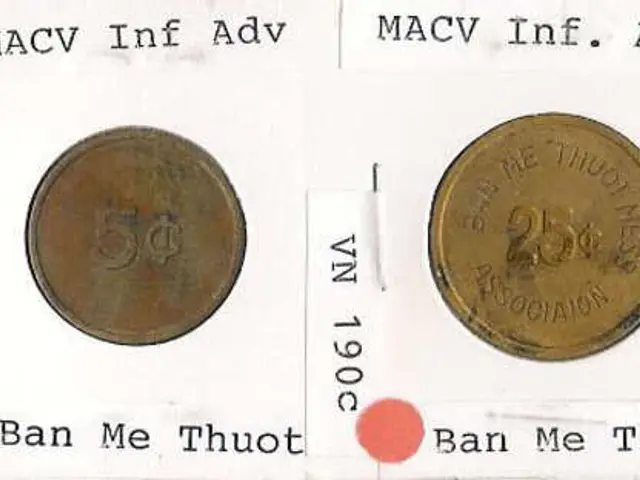Ethereum investment soars, escalating long positions to 59.41% as traders amplify their $143 million worth of investments across various exchanges.
In the world of cryptocurrency trading, the distribution of exposure for Ethereum (ETH) across various platforms has been a topic of interest. A recent analysis of trading activity reveals a varied landscape, with each exchange demonstrating its unique positioning.
Leading the pack is KuCoin, which has the most pronounced imbalance, with a staggering 73.61% of positions in longs and a notional value of $987.25 million in long interest. This is contrasted by 26.39% short positions and $354.03 million in shorts.
Binance follows closely, with 61.96% of open interest being long, amounting to a long exposure of $37.33 million, and $22.92 million in shorts. Bybit registered 73.46% of activity on the long side, with $11.71 million in long positions and $4.23 million in shorts.
Platforms such as BingX, MEXC, and Bitunix demonstrated more balanced positioning compared to other exchanges. BingX and MEXC showed a similar balance in their trading activity, with near-equal distribution between longs (48.76% and 50.85%, respectively) and shorts (48.76% and 49.15%, respectively). Notional values for long positions on BingX and MEXC were $3.94 million and $4.34 million, respectively, while shorts stood at $4.14 million and $4.19 million, respectively.
Bitunix reported a slight lean toward longs, with 57.01% of positions compared to 42.99% shorts. The platform recorded $2.35 million in long positions and $1.77 million in short activity.
It's worth noting that CoinFutures, though not explicitly named among the exchanges with the largest differences in long-to-short ratios, is a platform allowing high-leverage trading (up to 1000x) and flexible short/long positions on Ethereum futures. This may contribute to considerable short-selling activity on this platform.
Institutional investors have a long/short ratio around 3.7:1, but overall data from Coinglass shows a declining Ethereum long/short ratio to 0.86, indicating increasing short bets. However, specific platforms driving this trend are not detailed.
Gate and WhiteBIT showed higher levels of short interest, diverging from the broader market's positioning. Gate has a higher percentage of shorts (57.26%) compared to longs (42.74%), with $23.28 million in shorts and $17.37 million in longs. WhiteBIT leans toward shorts, with 68.26% of positions against 31.74% longs, and $2.57 million in short exposure and $1.19 million in longs.
The reported data illustrated how Ethereum traders distributed exposure across multiple platforms. While Ethereum's positioning leaned toward long exposure across exchanges, variations were clear between trading venues. The ratios captured how exchanges reported exposure in the current trading session.
This analysis provides valuable insights into the Ethereum trading landscape, offering a glimpse into the strategies employed by traders across various platforms. As the market continues to evolve, it will be interesting to observe how these trends shift and adapt over time.
Read also:
- Peptide YY (PYY): Exploring its Role in Appetite Suppression, Intestinal Health, and Cognitive Links
- Toddler Health: Rotavirus Signs, Origins, and Potential Complications
- Digestive issues and heart discomfort: Root causes and associated health conditions
- House Infernos: Deadly Hazards Surpassing the Flames








